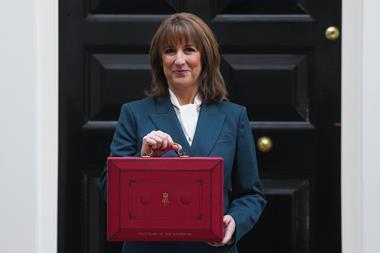Chemists have created what is probably the smallest ever computational device, by incorporating a molecular logic gate inside a sphere with a radius of only 3nm.
British and Japanese chemists have created what is probably the smallest ever computational device, by incorporating a molecular logic gate inside a sphere with a radius of only 3nm.

The team was led by A. Prasanna de Silva of Queen’s University, Belfast, one of the pioneers in the field of molecular computing. Over the past 10 years, de Silva has created a variety of molecular logic gates by attaching ion receptors to fluorescent compounds. Through a process known as photoinduced electron transfer, the presence of these receptors usually prevents the fluorescent compound from emitting light, unless the receptors bind with specific ions. By attaching different combinations of receptors to the fluorescent compounds, de Silva has created logic gates such as AND and OR, in which the presence or absence of the specific ions is the input, and light is the output.
Now, de Silva has teamed up with chemists from Nara Women’s University, Japan, led by Seiichi Uchiyama, to incorporate a molecular AND logic gate inside a nanoscale sphere known as a micelle. A micelle is a tiny particle made up of amphiphilic molecules (possessing both hydrophilic and hydrophobic sections), which spontaneously group together, usually in the form of a sphere, in aqueous environments.
De Silva and his team created the AND logic gate by linking the fluorescent compound anthracene to receptors for H+ and Na+. They also added a long alkyl chain to the logic gate, which meant that it would naturally anchor itself to the inside of micelles made of tetramethylammonium dodecyl sulfate. The team then showed that an aqueous solution of these micelles, which have a radius of around 3nm, was now able to fluoresce, but only if both H+ and Na+ were added to the solution.
De Silva is now looking to incorporate logic gates within other membrane structures. ’We will continue to try to perform more complex or more useful logic operations in interesting spaces,’ he told Chemistry World. Jon Evans
References
J. Am. Chem. Soc.(DOI: 10.1021/ja0513638)






No comments yet